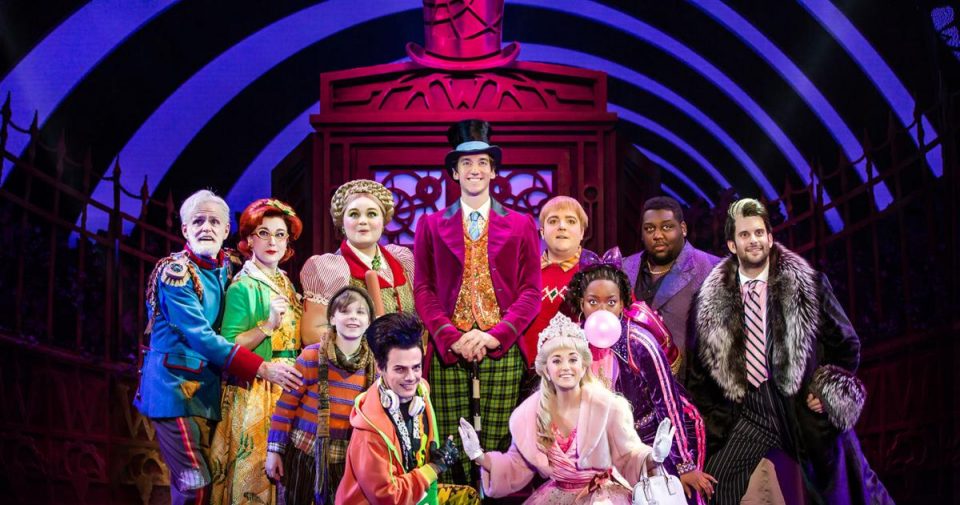“Charlie and the Chocolate Factory” began as a 1964 children’s novel by Roald Dahl. It was turned into the movie “Willy Wonka & the Chocolate Factory” seven years later and returned to the silver screen as “Charlie and the Chocolate Factory” in 2005, with each production putting a slightly different spin on the fantastic story of Charlie Buckets, a poor chocolate-loving kid, inside the factory run by the eccentric Willy Wonka.
In 2013, a musical version of “Charlie and the Chocolate Factory” had its debut, and it too added something to Dahl’s story to fit it to the stage. And as the national touring company demonstrated during the musical’s Nebraska debut at the Lied Center for Performing Arts on Thursday, it works as well there as it did on the page and celluloid.
The two most obvious alterations for the musical are, first, save for Charlie, all the children who get the golden tickets that let them tour the factory are played by young adults — that’s more of a practical change, having all the kids played by kids would require about 15 youngsters in the production.
People are also reading…
The second involves those kids, who each get musical introductions when they’re announced as ticket winners — Augustus Gloop and his mother doing a Bavarian romp, complete with yodeling; the “Queen of Pop” (a very good Zakiya Baptiste) doing a ’80s pop/r&b style number; the spoiled Russian brat Veruca Salt doing some ballet; and Mike Teevee and his booze-loving mother (from Iowa) singing of their life with modern devices and wine.
Those intros make up most of the musical’s first act, which, by design has to be expository, with Charlie (a convincing Kai Edgar) telling his family’s backstory in “Willie Wonka! Willie Wonka!” and setting up his desire to see the factory and his quest for the last golden ticket.
“Charlie and the Chocolate Factory,” however, comes alive in act two, which belongs to long, lanky, top-hatted Cody Garcia, who’s a perfectly funny, slightly sinister Willy, and to the Oompa Loompas, who got a cheer the first time they appeared on stage.
Smartly created, with actors wearing body suits and moving the little oompas legs with their arms while their faces peer out of costumes topped by shocks of orange hair, the Oompas steal the show each time they make it onto the stage.
The staging is as inventive as the costuming, especially in the second act, when sets reveal the world made of candy, dancing squirrels and, at the end, Willy’s glass elevator (which was part of an unfinished Dahl sequel).
The musical is also more than a bit self-aware — at one point there’s a line that “some day this is going to make a great story” and intentionally works out of time, with Charlie’s family living in the Depression era or perhaps postwar English poverty, Mike Tevee’s mom dressed as a ’50s housewife and references to TikTok, which is as contemporary as it can get.
All of that somehow works together to make the production entertaining for the entire audience, from the parents and grandparents who brought the youngsters to the show — and got some jokes and references that flew right past the under-10 set — and the kids who clearly had a good time watching the story come to life on stage.
It’s perhaps the best measure of “Charlie and the Chocolate Factory” as entertainment is that it makes what is really a dark story — the other four kids come to some pretty horrifying, if very funny, ends — never macabre or scary.
With two hourlong acts and a 20-minute intermission, the younger viewers got to stay out late on what’s typically a school night. That won’t be an issue when “Charlie and the Chocolate Factory” plays Friday and Saturday.
REPLACE WEB HEADLINE AND ADD A SUMMARY GRAF


